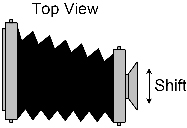A change is gonna come!
Photography is easy. No really…..I actually think that taking photographs is one of the most easy things to do. You point your camera (or phone) at a person/ object and push the button. That’s it! And you have an instant piece of reality frozen in time, at your disposal. Upload it to your social media of choice and you even have an audience of potentially millions of people. Peace of cake! My grandmother could do it, without any training. Well if she still would be alive that is. Actually billions of people do this on a daily base.
Hhhmmmmm…there must be a catch right?
Well what if you want to take pictures of ’things’ that don’t exist. That only float around as a rudimentary vision in your brain? Where do you point your camera at? When are you going to press the button? When is the elusive decisive moment?
There is still some mystery left in this world and if you look carefully there is also some amazement to be experienced. But you have to look beyond the photograph as a document. Now that’s hard! To unveil a piece of (un)reality that you cannot take for granted. But still, there are some photographers who actually do just this.
This is where the book “Beyond Photography” comes in.
This book is a summary of 42 photographers in the Netherlands and Belgium who embrace imaginative photography for the last thirty years. It counts 280 pages and the book also contains four essays that discuss the theme “beyond photography”. The limits of photography are being examined and stretched. The result are images that reach beyond the pure photographical. It’s a must read!
To me this book is rather special, because there are a whole lot of books that discuss documentary photography, but almost none that deal with imaginative photography. I think it’s time for something new.
Wait…can you hear that? Listen carefully…. a change is gonna come.

















